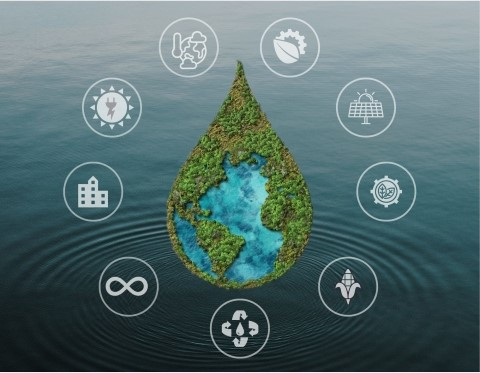9th Annual Trottier Symposium on Sustainable Engineering, Energy and Design

The 9th edition of the Symposium took place on September 13 with engaging guests, Henk Ovink and Marina Tabassum, speaking on the subject of Confronting Climate Change with Design for Resilience. The talks and discussions were moderated by Professor Nik Luka.
In January, TISED’s ad hoc Symposium Organizing Committee brainstormed topics for this year’s conference. Initially planned as an in-person event, the uncertainty of Omicron forced the committee to consider a virtual event. Previous symposia have focused on decarbonization, climate change and the pandemic. “When we began looking for themes in January,” says Monika Skonieczny, TISED’s manager, “we were looking for a hopeful message.”
“Addressing the climate change crisis is the most urgent issue facing our collective society,” says Skonieczny, “and especially in the context of a global pandemic, this challenge often feels overwhelming. Yet everyday around the world, there are people working with communities on the front lines of climate change, adapting and reinventing current design practices to incorporate resiliency in the face of climate-driven natural disasters. We were looking for speakers who could share examples of these success stories with our audience.”
The focus of Henk Ovink’s work is water and how the Earth’s water has been affected by climate change. Ovink served on President Obama’s Hurricane Sandy Rebuilding Task Force and developed and led ‘Rebuild by Design’. He underlines the value of a soft space, the place where various stakeholders come together and set aside the time to understand the complexity of a situation. The response to Hurricane Sandy involved formulating interrelated plans over nine months, working to restore coastlines as well as biodiversity to the area. One of the most important elements was forming partnerships to truly understand the problems.
When disaster strikes, Ovink points out, it hits those most vulnerable first and hardest, because they are already living in untenable conditions. When Covid hit, and we were told to wash our hands, it was easy to overlook the fact that 3 billion of the world’s people do not have access to hygienic facilities. “To reinvent our path for the future, we must invest in people and institutions, and the solutions, commitments and partnerships that come with them.”
In early 2022, Marina Tabassum, a Bangladeshi architect and educator, founded the non-profit arm of her architectural firm, Foundation of Architecture Community Equity (FACE). The group designs humane living environments for ultra-low income groups who are homeless as a result of the climate crisis; 22 million people have been affected by changes to the Ganges Delta as its edges are reshaped with each monsoon season.
Tabassum likes to bring the focus of her projects back to nature and the regional context, designing low-cost versions of vernacular housing built by locals. Tabassum stresses that each of her projects begins with strong community engagement, from planning, to design, to material sourcing and selection of local artisans and trades. “It is the community who decides the architectural team is there to offer the technical support, the knowledge and the know-how that we have from our side.”
When asked about the challenges of engaging community, Tabassum admits that while it is critical to engage with local populations, it is also the most challenging aspect of the design process. In the future, she says, consulting with other experts could help give a more comprehensive understanding of the situation on the ground. “A multi-disciplinary approach would be best, answering questions like why people behave the way they do. We need to partner with other experts, have conversations with anthropologists, sociologists, geographers, climate experts. And the NGOs and humanitarian agencies that have been making connections on the ground for years.”
If you missed the live event, you can watch a recording of the 9th Trottier Symposium, Confronting Climate Change with Design for Resilience, on YouTube.
You may also learn more about this year’s guest speakers:
Marina Tabassum, Using local building traditions and community voices in designing more sustainably
Henk Ovink, Looking to nature-based design to minimize damage from climate disasters